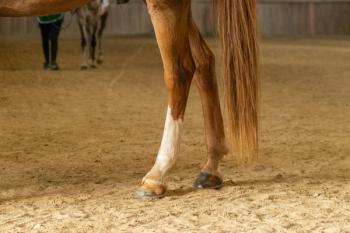
Hot Literature: Is femoral trochlear groove deepening needed to treat medial patellar luxation?
New information on treating medial patellar luxation in dogs.
Surgical recommendations for treating medial patellar luxation (MPL) in dogs frequently include a combination of soft tissue reconstruction, femoral trochlear groove deepening, and lateral transposition of the tibial crest. The long-term effects on the stifle joint and progression of osteoarthritis (OA) after a trochlear groove deepening procedure (even with those that aim to preserve hyaline cartilage) have not been documented. And while various combinations of these procedures are used in practice and have been studied extensively, patient selection criteria has not been reported, and no uniform surgical correction for MPL in a group of patients has been looked at previously.
Study methods
To begin to fill this information void, veterinarians at Norwood Park Animal Hospital in Norridge, Ill., conducted a retrospective study. They reviewed cases involving dogs that underwent treatment for MPL with lateral retinacular imbrication and tibial crest transposition without trochlear groove deepening. The goal was to evaluate MPL cases that were treated identically, regardless of clinical findings, including trochlear depth.
The group of patients consisted of male and female dogs at a ratio of 1:1.8, encompassing broad age and weight ranges (1 to 13 years and 1.7 to 52.7 kg). Most patients had a preoperative MPL grade of 3 on a scale of 1 to 4. Signalment, clinical history, unilateral or bilateral involvement, preoperative and postoperative MPL grades, outcomes, complications, and OA progression were evaluated during an eight-week postoperative period.
Medical records for 91 dogs receiving surgical treatment met the criteria and were included in the statistical analysis. Dogs with a history of cranial cruciate ligament ruptures were excluded, and only the first limb treated was evaluated in dogs with bilateral MPL. Preoperative and eight-week postoperative caudocranial and mediolateral radiographs were randomly reviewed by two investigators and, based on a system of 30 factors, given a score of 0 to 3, representing no OA progression to marked changes.
Study findings
At the eight-week follow-up, 10 dogs (11%) had at least occasional lameness. This percentage corresponds well to other studies looking at surgical correction of MPL, and only six patients had major complications requiring additional surgery for patellar luxation. Minor complications were reported in 34.1% of the cases and included problems such as incisional inflammation (secondary to licking), development of a seroma, pin migration, infection, and cellulitis. The two investigators’ radiographic evaluations showed excellent agreement, and the OA scores did not change for any patient during the evaluation period.
As the authors note, this type of retrospective study is not without limitations, and the relatively short follow-up period may not have been sufficient to recognize OA progression. Furthermore, the depth of the femoral trochlear groove was not measured in these patients, so a relative cutoff for use of a deepening procedure could not be determined.
The findings of this study suggest that surgical correction without a trochlear groove deepening procedure produces similar outcomes to that reported in other studies and does not suggest a greater likelihood of additional surgeries or OA progression. The authors emphasize that they are not proposing elimination of trochlear groove deepening for correction of MPL but, rather, that they encourage prudent decision-making and further research to better select those patients that will benefit most.
Linney WR, Hammer DL, Shott S. Surgical treatment of medial patellar luxation without femoral trochlear groove deepening procedures in dogs: 91 cases (1998-2009). J Am Vet Med Assoc 2011;238(9):1168-1172.
Link to abstract:
Newsletter
From exam room tips to practice management insights, get trusted veterinary news delivered straight to your inbox—subscribe to dvm360.






